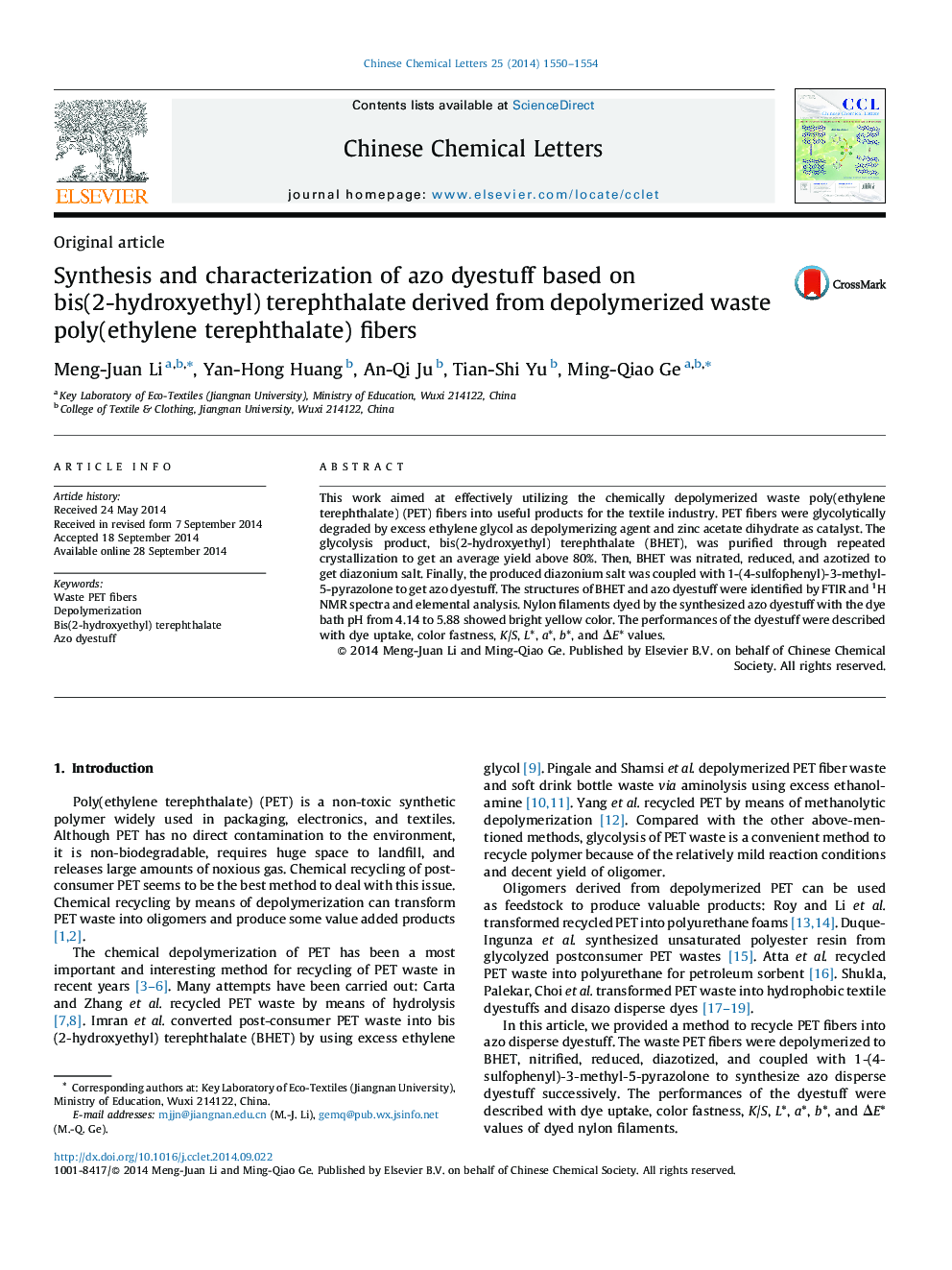| کد مقاله | کد نشریه | سال انتشار | مقاله انگلیسی | نسخه تمام متن |
|---|---|---|---|---|
| 1254106 | 971345 | 2014 | 5 صفحه PDF | دانلود رایگان |

This work aimed at effectively utilizing the chemically depolymerized waste poly(ethylene terephthalate) (PET) fibers into useful products for the textile industry. PET fibers were glycolytically degraded by excess ethylene glycol as depolymerizing agent and zinc acetate dihydrate as catalyst. The glycolysis product, bis(2-hydroxyethyl) terephthalate (BHET), was purified through repeated crystallization to get an average yield above 80%. Then, BHET was nitrated, reduced, and azotized to get diazonium salt. Finally, the produced diazonium salt was coupled with 1-(4-sulfophenyl)-3-methyl-5-pyrazolone to get azo dyestuff. The structures of BHET and azo dyestuff were identified by FTIR and 1H NMR spectra and elemental analysis. Nylon filaments dyed by the synthesized azo dyestuff with the dye bath pH from 4.14 to 5.88 showed bright yellow color. The performances of the dyestuff were described with dye uptake, color fastness, K/S, L*, a*, b*, and ΔE* values.
Waste poly(ethylene terephthalate) fibers were depolymerized into bis(2-hydroxyethyl) terephthalate and synthesized as azo dyestuff. The synthesized dyestuff showed bright yellow color and was utilized to dye nylon filaments and fabrics in the acidic dye bath.Figure optionsDownload as PowerPoint slide
Journal: Chinese Chemical Letters - Volume 25, Issue 12, December 2014, Pages 1550–1554